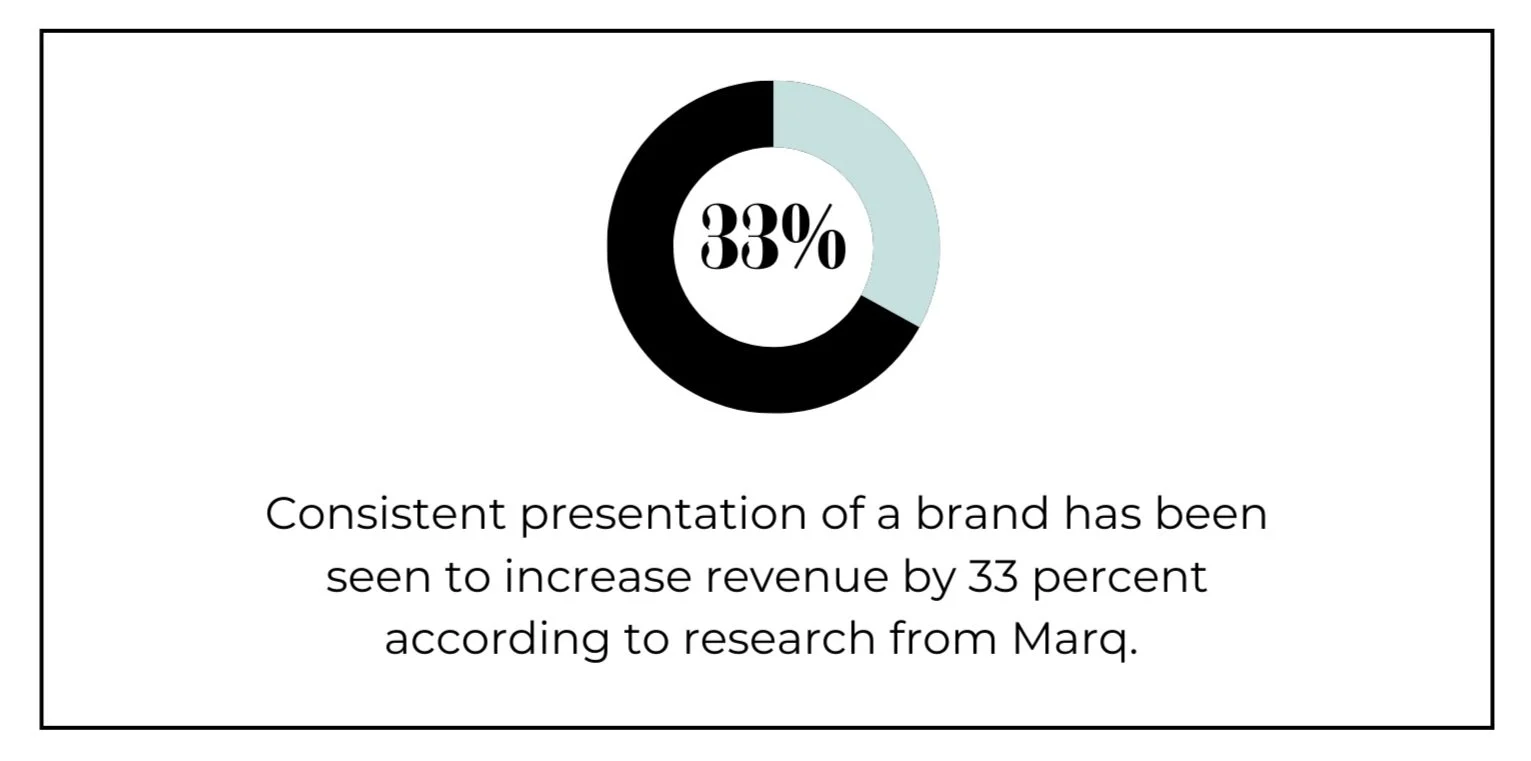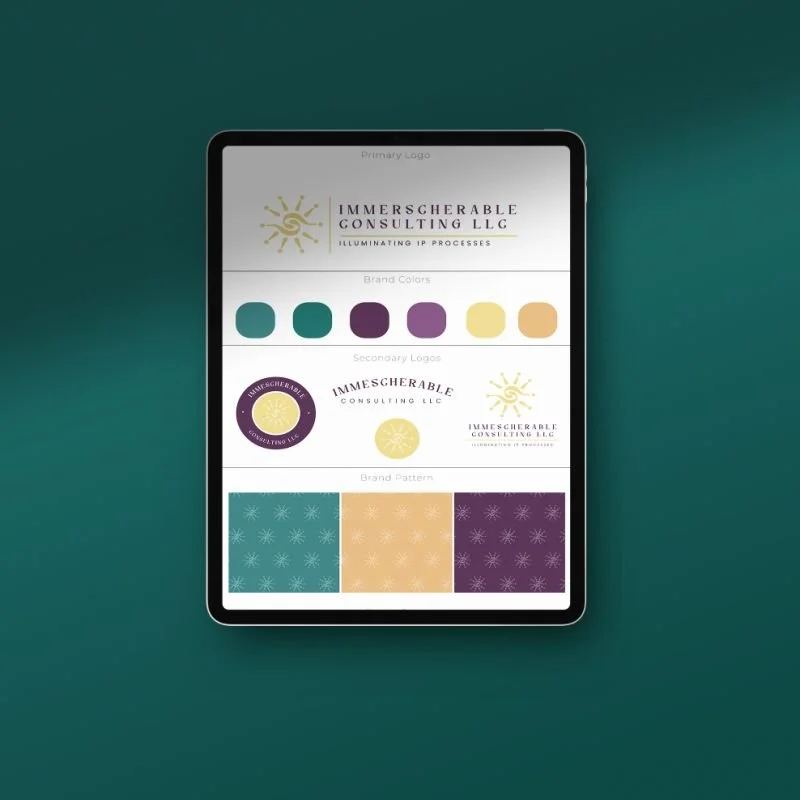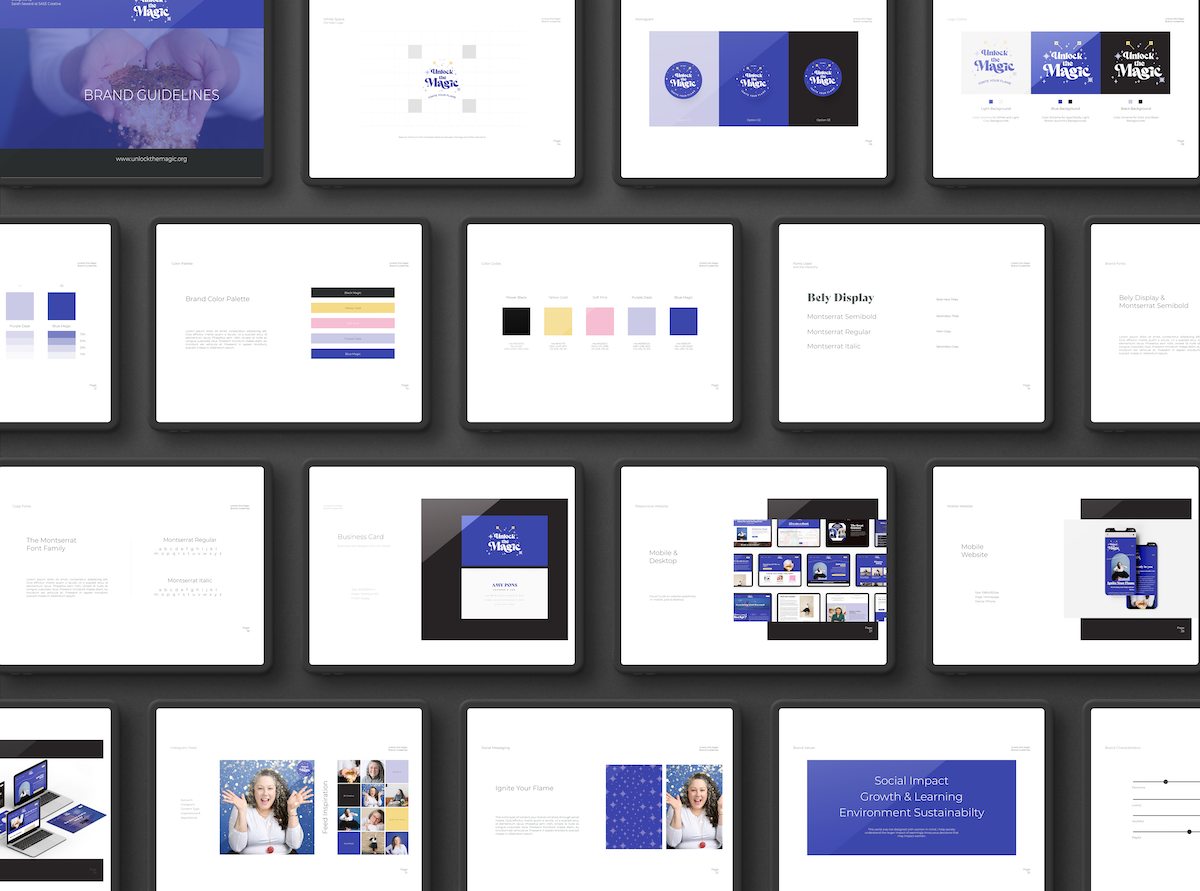The Anatomy of Visual Branding
From Logos to Color Schemes: Visual Branding Essentials
In today's busy marketplace, you’re vying for consumer attention from lots of brands. The power of a strong brand identity can make a big difference. As a graphic designer, I don't just design logos; I design brands. A brand is a living entity that extends far beyond a single logo. It's an experience, an emotion, and a story that resonates with the audience.
It may sound like a lot of work, but the consistent presentation of a brand can lead to more sales for your brand. Research from Marq on brand consistency found that consistent presentation of a brand has been seen to increase revenue by 33 percent.
Research from Marq on brand consistency found that consistent presentation of a brand has been seen to increase revenue by 33 percent.
At its core, branding is the process of creating and managing a distinctive identity for a product, service, company, or individual. It's the art and science of crafting a perception in the minds of your target audience, which sets you apart from competitors and establishes a unique connection. Branding encompasses both the tangible and intangible elements that shape how people perceive and interact with your business.
What’s in a Brand?
A brand is more than just a logo or a catchy tagline. It's a multifaceted construct that encompasses a variety of components, each contributing to its overall identity. As a graphic designer who creates brands, it's crucial to understand these components and weave them together harmoniously to create a cohesive brand identity. Here's what a brand consists of:
Visual Identity: This includes the most recognizable elements of a brand, such as logos, typography, colors, and imagery. These visuals serve as the face of the brand and are often the first thing people notice. A well-designed visual identity conveys the brand's personality, values, and offerings.
Brand Personality: Just like individuals, brands can have personalities. Are you a youthful and energetic brand, or a sophisticated and professional one? Your brand’s personality is a set of human traits and characteristics that you want your audience to associate with your brand. It guides the tone of your communications and the way you interact with customers.
Brand Promise: This is the commitment you make to your customers. It's the value you promise to deliver consistently through your products, services, and interactions. A strong brand promise helps build trust and loyalty among your audience.
Brand Story: Every brand has a story to tell. This narrative can encompass the brand's origins, its mission, the challenges it overcame, and the impact it aims to create. A compelling brand story engages customers emotionally and helps them connect with your brand on a deeper level.
Brand Values: These are the principles and beliefs that guide your brand's actions and decisions. Clearly defined brand values help align your team and resonate with like-minded customers who share those values.
Customer Perception: Your brand is ultimately how your customers perceive you. It's their emotional response when they encounter your brand, whether through visuals, interactions, or experiences. Positive customer perception leads to brand loyalty and advocacy.
Consistency: Consistency across all brand touchpoints is key. From your website to social media to packaging, maintaining a unified look, tone, and message ensures that your brand is easily recognizable and builds trust over time.
Brand Experience: This encompasses every interaction a customer has with your brand, from the first visit to your website to the post-purchase support. A positive brand experience creates memorable moments and fosters lasting relationships.
Market Positioning: How your brand is positioned relative to competitors is vital. Are you the affordable option, the luxury choice, or the innovative disruptor? Market positioning helps you carve out your unique space in the market.
By understanding and crafting each of these components thoughtfully, you're not just designing logos; you're creating an immersive and holistic brand identity that resonates with audiences, tells a compelling story, and fosters lasting connections. For this blog post, we are just talking about specific components of your visual brand. But we wanted to make sure you
Components of a Visual Brand
Visual branding, like a language, communicates values, promises, and narratives. It shapes perceptions and guides decision-making. Through this blog, we embark on a captivating exploration of the core components that constitute the very DNA of visual branding. We'll unravel the psychology behind color choices, dissect the elements that make a logo iconic, and decipher the secret messages hidden within typography.
Whether you're a seasoned marketer looking to refine your brand's identity or a curious learner eager to understand the magic behind logos, this journey promises to be enlightening. Join us as we navigate the labyrinth of visual branding, demystifying its intricacies and discovering how it has evolved from a mere logo to a multidimensional experience that captures hearts and minds.
Here are the components of your visual brand:
Main Logo
Favicon Logo
Typeface Logo
Brand Colors
Brand Visuals
Brand Typography
These components should all be clearly defined in a brand style guide.
I. Main Logo: The Face of Your Brand
The main logo is the visual cornerstone of your brand. It's the image that springs to mind when people think of your business. But it's not just about selecting a symbol and slapping your company name beside it. Crafting a main logo is a meticulous process that involves understanding your brand's essence, values, and aspirations. Every element - from the color palette to the typography - contributes to the logo's ability to communicate the heart of your brand at a glance.
Imagine a coffee shop's logo: the rustic charm it exudes may come from a combination of earthy tones, vintage typography, and a coffee cup illustration. All these elements weave together to tell a story about the brand's commitment to quality and tradition.
II. Typeface Logo: Typography that Speaks Volumes
While the main logo commands attention, the typeface logo quietly wields its influence in the background. Typography is more than just a choice of fonts; it's a silent communicator of your brand's personality. Whether you opt for a bold, modern typeface or an elegant, cursive script, the typeface logo sets the tone for your brand's written communication. It's the difference between a playful children's clothing brand and a sophisticated high-end fashion label.
Consider the way Coca-Cola's cursive script evokes a sense of classic nostalgia, aligning perfectly with its brand's rich history and timeless appeal.
III. Favicon/Circle/Social Logo: Branding in Small Spaces
In the digital age, your brand must thrive in a myriad of online spaces, from a tiny favicon in a browser tab to a circular profile picture on social media. Designing for these minuscule canvases poses a unique challenge. However, these small visual fragments must uphold your brand's identity just as effectively as the larger counterparts.
Stay tuned for the rest of the blog post, where we'll delve into the intriguing world of brand colors, fonts, visuals, and style guides, uncovering the secrets behind a well-rounded brand identity that stands the test of time.
IV. Brand Colors: Painting a Psychological Picture
Colors are more than just visual aesthetics; they evoke emotions, memories, and associations. The careful selection of brand colors can either resonate with your target audience or miss the mark entirely. Consider the calming blues of a wellness brand, instilling trust and serenity, or the vibrant reds of an energy drink, invoking excitement and dynamism. Your brand colors should align not only with your industry but also with your brand's personality and values.
V. Brand Fonts: Typography Beyond the Logo
Typography is the unsung hero of design, and its significance goes well beyond the logo. The fonts you choose for headings, body text, and other design elements influence how your brand is perceived. A bold sans-serif font might convey strength and modernity, while a delicate script font could speak to elegance and grace. Consistency in font usage across all materials reinforces your brand's cohesiveness and professionalism.
VI. Brand Visuals: Evoking Emotions through Imagery
Visuals are a gateway to emotions. They connect with your audience on a visceral level, shaping their perception of your brand. Incorporating imagery, illustrations, and patterns that align with your brand's narrative enhances the emotional connection with your audience. Whether it's the playful illustrations of a children's toy company or the awe-inspiring photography of an adventure brand, visuals provide an opportunity to immerse your audience in your brand's world.
VII. Brand Style Guide: The Blueprint for Consistency
Creating a brand identity is an intricate process, and maintaining its consistency is equally crucial. This is where a brand style guide steps in. Think of it as your brand's rulebook, ensuring that every design element remains cohesive across all platforms and materials. From guidelines for logo usage to color codes, typography rules, and layout principles, a well-crafted style guide empowers not just designers but your entire team to communicate your brand's identity accurately.
As a graphic designer, my role extends past just designing a logo for my clients. My job is to be a brand architect, a storyteller, and a visual communicator. Each element of your brand's identity - from the main logo to the style guide - plays a crucial role in shaping how the world perceives a company. By delving into each piece with a design expert, you are on the right path to creating a comprehensive brand identity that resonates with target audiences and stands the test of time. Here’s an example of a finished visual brand.
From the main logo to the visual elements, from the typography to the brand story, each facet contributes its unique brushstroke to the canvas of brand perception. Remember, a brand is not a static entity but a living, breathing presence that resonates with audiences. It's a promise, a personality, and an experience that extends across every touchpoint. So whether it's the minimalist elegance of a typeface logo, the emotional resonance of brand visuals, or the unwavering consistency of a brand style guide, each component plays an indispensable role.
Need help building or designing your brand? Download our free brand planner workbook for a detailed guide to help you build a brand from start to finish.
Need help with your brand design? Get in touch with us today to get started.










